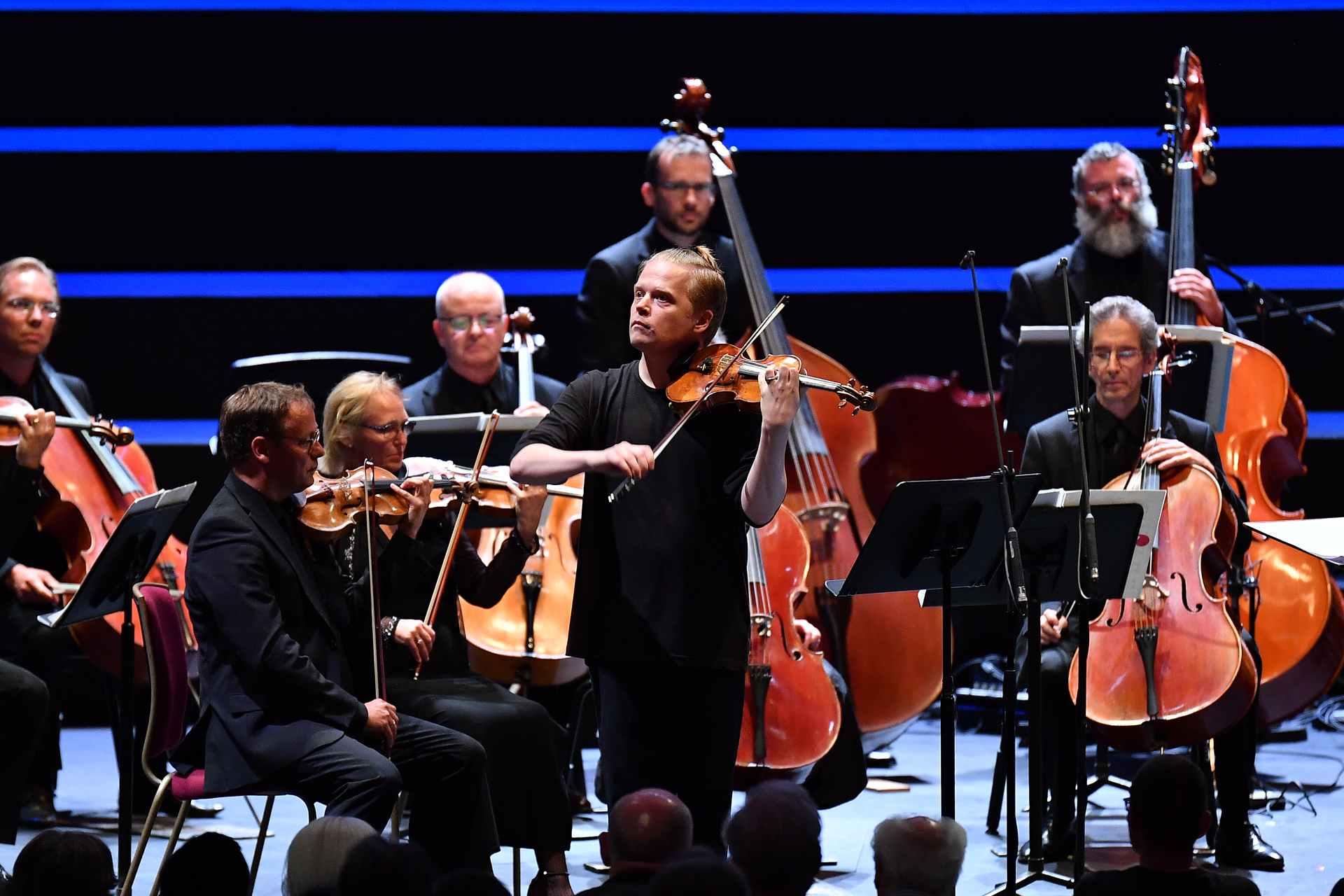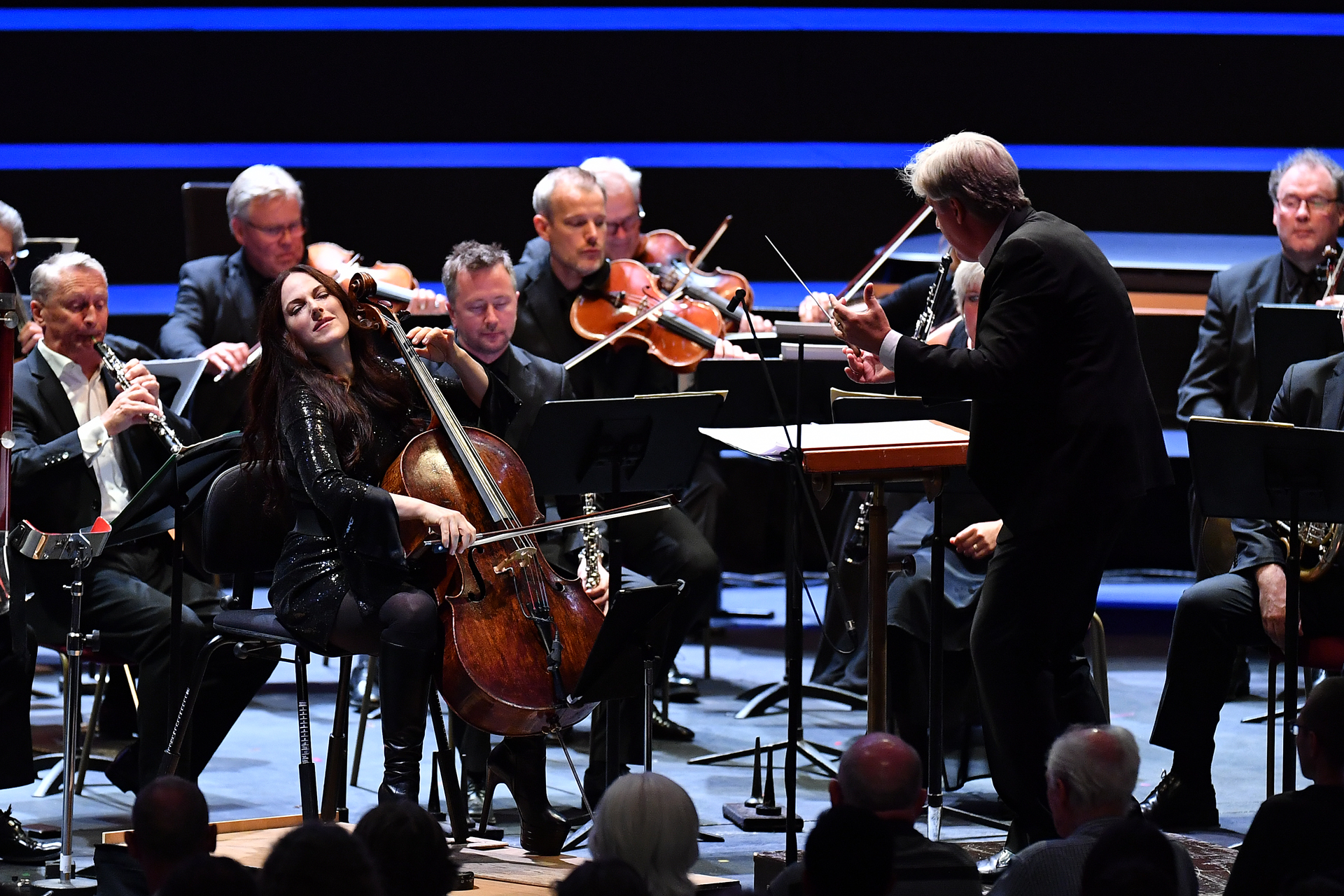Proms 29 / 30, Swedish Chamber Orchestra, Dausgaard review - Bach Brandenburgs and beyond | reviews, news & interviews
Proms 29 / 30, Swedish Chamber Orchestra, Dausgaard review - Bach Brandenburgs and beyond
Proms 29 / 30, Swedish Chamber Orchestra, Dausgaard review - Bach Brandenburgs and beyond
Strong instrumental soloists provided some highlights in a long day
A complex Swedish product to unpack, this one. Someone in the BBC must have worked out that it could do with a detailed instruction manual to help people with the task: the programme booklet duly ran to a full 50 pages.
There were two sets of components: firstly, all six of Bach’s Brandenburg Concertos, performed by the Swedish Chamber Orchestra and soloists. Plus, alongside each concerto, a newly commissioned companion piece by a prominent composer. The 12 works, six by Bach plus the six new pieces, were spread over two Proms on Sunday. Time required for complete assembly of the finished object including breaks: just under seven hours.
The concept and the origins of this big project are explained in David Nice’s 2015 piece, which describes an earlier version of it, witnessed in the orchestra’s home town of Örebro, at which time it was still a work in progress. The first two pieces, by Uri Caine (a companion for Brandenburg No. 5) and by Steven Mackey (for No. 2) were ready. Yesterday's marathon included the other four: pieces by Mark Anthony Turnage (for No. 1), Anders Hillborg (No. 3), Olga Neuwirth (No.4) and Brett Dean (No.6). All six of these performances were UK premières.
These two Proms served as a reminder of the many ways in which composers can respond to Bach. The Brandenburg concertos are also vehicles for soloists or groups of soloists, and the new pieces were presented with the talents of specific players in mind.
Perhaps the most obvious way to “update” Bach is to produce variants of the Stravinsky neo-classical style, and both the Steven Mackey and the Uri Caine pieces took that route. Both were programmed in the second half of the concerts, and, partly though not entirely because of that, both pieces seemed to outstay their welcome, with people walking out.
One of the joys of hearing Uri Caine is that, because his classical knowledge is so deep, he can transport the listener somewhere completely unexpected. There was a moment like that when he suddenly launched into the piú mosso theme from the last movement of Rachmaninov's Third Piano Concerto. But such moments of wild and joyous inspiration were all too infrequent. The piece Hamsa revels in off-kilter rhythms. For the orchestra that was the opportunity for them to show all the work that had gone in to piece the puzzle together, but for Caine and the other fine soloists, eloquent violinist Antje Weithaas, and flautist Fiona Kelly, blessed with a wonderful sound, it seemed something of a straitjacket. I had similar reservations about the last piece played at the end of the second concert, Steven Mackey’s Triceros built around the presence of Swedish trumpet virtuoso Håkan Hardenberger. Mackey’s default mode was just a tad too motoric and Nyman-ish for me.
If there was a Bach connection in Marc Antony Turnage’s piece, I confess to having missed it
For me, there was one stand-out piece among the six, the Austrian composer Olga Neuwirth’s Aello - Ballet Mecanomorphe. It was a display vehicle for the charismatic American flautist Claire Chase, and she responded to the task with energy, inventiveness, humour, and the repeated use of a loud “swoosh” sound on the flute. The orchestral writing also had some inventive new angles, a real sense of broadening of the sound one expects from a string orchestra, notably an eerie spectral section of sul ponticello harmonics.
Another very well received performance was Anders Hillborg’s Bach Materia, a companion piece for Brandenburg No. 1, which brought to the fore the inventiveness and protean energy of violinist Pekka Kuusisto (pictured above). A moment to treasure was his dialogue with the SCO’s principal bassist, the Québecois Sébastien Dubé, where the latter didn’t just play but also vocalised his bass solo-ing in the manner of Slam Stewart. Kuusisto himself also sang, and later whistled. The orchestral writing tended to be more elegaic, slow-moving, and not so easy to warm to.
If there was a Bach connection in Marc Antony Turnage’s piece, I confess to having missed it. The work was effectively a concerto slow movement designed as a vehicle for American cellist Maya Beiser (pictured below), with heart-on-sleeve echoes of Kol Nidrei. It proved popular, and there was also another use of the non-concordant bowing that Turnage also used as an expressive device in his arrangement of Joni Mitchell's Two Grey Rooms for Claire Martin.
The piece by Brett Dean, Approach - Prelude to a Canon, was above all a vehicle for Tabea Zimmermann, whose expressive power on the viola is always mesmerising. It was performed as a prelude to the Brandenburg Concerto. Knowing that the Bach was just around the corner, Dean’s games of anticipation and delay simply went on for too long. Brandenburg Concerto No. 6 itself paired Tabea Zimmerman with Brett Dean as soloists. Yes, Dean was once in the viola section of the Berlin Philharmonic, but on this occasion, Zimmermann-Dean was a rather obvious mismatch.
We are spoiled for choice when it comes to well-executed, historically informed performances of Bach. The audience at the Royal Albert Hall clearly enjoyed each time it could return to the certainty and the familiarity of the great master, but I kept having the impression that most of the rehearsal time had been given to the new commissions, with the idea that the Cantor from Leipzig could basically take care of himself. As Bach performances to set alongside those of, say, Masaaki Suzuki, John Eliot Gardiner, Trevor Pinnock or Gottfried von der Golz, these readings too often came across as under-prepared, muddy and accident-prone. Dausgaard’s conducting, precise and decisive in the new pieces, didn’t seem to help ensemble in the Bach, and his brake-to-the-floor ritenuto at the end of each movement sounded more mannered each time he did one.
The Bach performances were at their best when the soloists were let free and put to the fore. Several have been mentioned already, but one who made a real mark on this event (but didn’t have any role in the new pieces) was Mahan Esfahani. His way of clarifying and making musical sense of the antics of the cadenza from Brandenburg Concerto No. 5 was a genuine highlight of this very long day.
- Listen to Prom 29 ; Prom 30 on BBC iPlayer
- Read more classical reviews from theartsdesk
rating
Share this article
Add comment
The future of Arts Journalism
You can stop theartsdesk.com closing!
We urgently need financing to survive. Our fundraising drive has thus far raised £49,000 but we need to reach £100,000 or we will be forced to close. Please contribute here: https://gofund.me/c3f6033d
And if you can forward this information to anyone who might assist, we’d be grateful.

Subscribe to theartsdesk.com
Thank you for continuing to read our work on theartsdesk.com. For unlimited access to every article in its entirety, including our archive of more than 15,000 pieces, we're asking for £5 per month or £40 per year. We feel it's a very good deal, and hope you do too.
To take a subscription now simply click here.
And if you're looking for that extra gift for a friend or family member, why not treat them to a theartsdesk.com gift subscription?
more Classical music
 From Historical to Hip-Hop, Classically Black Music Festival, Kings Place review - a cluster of impressive stars for the future
From quasi-Mozartian elegance to the gritty humour of a kitchen inspection
From Historical to Hip-Hop, Classically Black Music Festival, Kings Place review - a cluster of impressive stars for the future
From quasi-Mozartian elegance to the gritty humour of a kitchen inspection
 Shibe, LSO, Adès, Barbican review - gaudy and glorious new music alongside serene Sibelius
Adès’s passion makes persuasive case for the music he loves, both new and old
Shibe, LSO, Adès, Barbican review - gaudy and glorious new music alongside serene Sibelius
Adès’s passion makes persuasive case for the music he loves, both new and old
 Anja Mittermüller, Richard Fu, Wigmore Hall review - a glorious hall debut
The Austrian mezzo shines - at the age of 22
Anja Mittermüller, Richard Fu, Wigmore Hall review - a glorious hall debut
The Austrian mezzo shines - at the age of 22
 First Person: clarinettist Oliver Pashley on the new horizons of The Hermes Experiment's latest album
Compositions by members of this unusual quartet feature for the first time
First Person: clarinettist Oliver Pashley on the new horizons of The Hermes Experiment's latest album
Compositions by members of this unusual quartet feature for the first time
 Gesualdo Passione, Les Arts Florissants, Amala Dior Company, Barbican review - inspired collaboration excavates the music's humanity
At times it was like watching an anarchic religious procession
Gesualdo Passione, Les Arts Florissants, Amala Dior Company, Barbican review - inspired collaboration excavates the music's humanity
At times it was like watching an anarchic religious procession
 Classical CDs: Camels, concrete and cabaret
An influential American composer's 90th birthday box, plus British piano concertos and a father-and-son duo
Classical CDs: Camels, concrete and cabaret
An influential American composer's 90th birthday box, plus British piano concertos and a father-and-son duo
 Cockerham, Manchester Camerata, Sheen, Martin Harris Centre, Manchester review - re-enacting the dawn of modernism
Two UK premieres added to three miniatures from a seminal event of January 1914
Cockerham, Manchester Camerata, Sheen, Martin Harris Centre, Manchester review - re-enacting the dawn of modernism
Two UK premieres added to three miniatures from a seminal event of January 1914
 Kempf, Brno Philharmonic, Davies, Bridgewater Hall, Manchester review - European tradition meets American jazz
Bouncing Czechs enjoy their Gershwin and Brubeck alongside Janáček and Dvořák
Kempf, Brno Philharmonic, Davies, Bridgewater Hall, Manchester review - European tradition meets American jazz
Bouncing Czechs enjoy their Gershwin and Brubeck alongside Janáček and Dvořák
 Solomon, OAE, Butt, QEH review - daft Biblical whitewashing with great choruses
Even a top soprano and mezzo can’t make this Handel paean wholly convincing
Solomon, OAE, Butt, QEH review - daft Biblical whitewashing with great choruses
Even a top soprano and mezzo can’t make this Handel paean wholly convincing
 Two-Piano Gala, Kings Place review - shining constellations
London Piano Festival curators and illustrious friends entertain and enlighten
Two-Piano Gala, Kings Place review - shining constellations
London Piano Festival curators and illustrious friends entertain and enlighten
 Echo Vocal Ensemble, Latto, Union Chapel review - eclectic choral programme garlanded with dance
Beautiful singing at the heart of an imaginative and stylistically varied concert
Echo Vocal Ensemble, Latto, Union Chapel review - eclectic choral programme garlanded with dance
Beautiful singing at the heart of an imaginative and stylistically varied concert
 Scott, Irish Baroque Orchestra, Whelan, RIAM, Dublin review - towards a Mozart masterpiece
Characteristic joy and enlightenment from this team, but a valveless horn brings problems
Scott, Irish Baroque Orchestra, Whelan, RIAM, Dublin review - towards a Mozart masterpiece
Characteristic joy and enlightenment from this team, but a valveless horn brings problems



Comments
I agree that the new
A thoughtful comment, thanks.